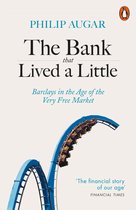Banks and Their Customers: A Practical Guide for all who Keep Banking Accounts from the Customers' Point of View Ebook Tooltip Ebooks kunnen worden gelezen op uw computer en op daarvoor geschikte e-readers.
Afbeeldingen
Artikel vergelijken
- Engels
- E-book
- 9781465633101
- 15 september 2019
- Adobe ePub
Samenvatting
We are now approaching a new banking era; and in 1694 the Bank of England, which was the first joint-stock bank established in the three kingdoms, was incorporated. The private bankers, instantly recognizing in her a formidable rival, were actively hostile; but all to no purpose; and in a very little while they grouped themselves round the Old Lady, who reduced their rates and kept them in order. Hoares and Childs were in being before the Bank; but the goldsmiths, long before the new movement was a brilliant success, had few direct descendants in London; and the majority of those private bankers who opposed the Act of 1833 belonged to another generation. At its inception the Bank did not enjoy a monopoly; but upon the renewal of its charter in 1708 it was granted the monopoly of joint-stock banking in England, while the partners in a private bank could not exceed six in number. This number was increased to ten in 1857. Country banking developed slowly in England; and it was not until towards the close of the eighteenth century that private firms began to multiply in the provinces; but the Bank of England’s iniquitous monopoly kept them small and weak, and between 1792 and 1820 over one thousand private bankers came to grief, while the crisis of 1825 further thinned their ranks and almost emptied the vaults of the Bank of England, when it dawned upon the Government that the state of the money-market was distinctly rotten, and that it would remain so until the Bank’s monopoly disappeared. The result was the usual committee and the usual compromise. The Act of 1826 allowed joint-stock banks of unlimited liability to be formed in England and to carry on business at a greater distance than sixty-five miles from London; but such institutions could not open an office in London. Neither could they issue notes at a place within sixty-five miles thereof, nor draw any bills on London for a less amount than £50. In 1833, however, they were allowed to make their bills and notes for less than £50 payable on demand at their London agents. The demand for these establishments was not at first considerable; and very few were formed until after five or six years of the passing of this Act; but in 1830 the railway movement began in earnest, and from 1833 to 1836 joint-stock banks were established throughout the country in considerable numbers. This sudden boom in banking companies could only have one result; and failures became so numerous that Sir Robert Peel, in 1844, passed his Joint-Stock Banking Act, which, being found worse than the disease itself, was repealed in 1857. London, we have seen, contained only one banking corporation and numerous private bankers, who, forming a monopoly, were practically rich men’s banks; for they would only accept an account provided the balance was not reduced below a certain sum, while from 1813 to 1833 some twenty of them suspended payment; so stability was not one of their distinguishing characteristics. It soon became apparent that the Bank of England and the private bankers were quite unable to minister to the growing trade of the capital; and in 1833 joint-stock banks were allowed to be formed in London, but upon the distinct understanding that they were to be banks of deposit and not banks of issue. In other words, they could not issue their own notes, so were compelled to use those of the Bank of England. The first London joint-stock bank was the London and Westminster, whose prospectus was issued in 1833; but the shares were subscribed slowly, and the bank did not open its doors to the public until the March of the year following. Then came the London Joint-Stock Bank in 1836, and the Union Bank in 1839.
Productspecificaties
Inhoud
- Taal
- en
- Bindwijze
- E-book
- Oorspronkelijke releasedatum
- 15 september 2019
- Ebook Formaat
- Adobe ePub
Betrokkenen
- Hoofdauteur
- Henry White Warren
- Hoofduitgeverij
- Library Of Alexandria
Lees mogelijkheden
- Lees dit ebook op
- Android (smartphone en tablet) | Kobo e-reader | Desktop (Mac en Windows) | iOS (smartphone en tablet) | Windows (smartphone en tablet)
Overige kenmerken
- Studieboek
- Nee
EAN
- EAN
- 9781465633101
Je vindt dit artikel in
- Categorieën
- Taal
- Engels
- Boek, ebook of luisterboek?
- Ebook
- Beschikbaar in Kobo Plus
- Beschikbaar in Kobo Plus
- Beschikbaarheid
- Leverbaar
Kies gewenste uitvoering
Prijsinformatie en bestellen
De prijs van dit product is 4 euro en 99 cent.- E-book is direct beschikbaar na aankoop
- E-books lezen is voordelig
- Dag en nacht klantenservice
- Veilig betalen
Rapporteer dit artikel
Je wilt melding doen van illegale inhoud over dit artikel:
- Ik wil melding doen als klant
- Ik wil melding doen als autoriteit of trusted flagger
- Ik wil melding doen als partner
- Ik wil melding doen als merkhouder
Geen klant, autoriteit, trusted flagger, merkhouder of partner? Gebruik dan onderstaande link om melding te doen.








